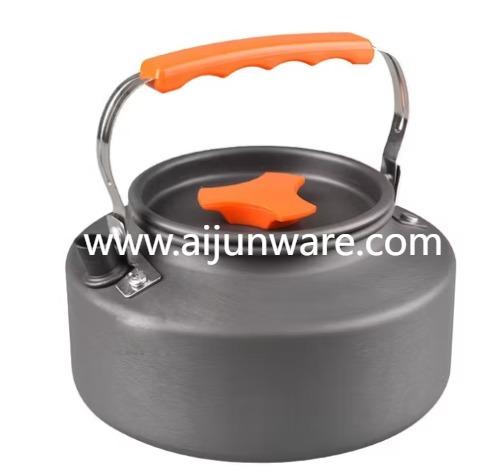What Features Make a Camping Grill And Stove Effective in Winter

As outdoor enthusiasts increasingly embrace four-season adventures, the challenge of preparing warm meals in freezing conditions has gained renewed attention. The growing interest in winter camping and cold-weather expeditions highlights the importance of reliable gear that performs when temperatures drop significantly. While many portable cooking systems work adequately in mild conditions, fewer maintain their efficiency and usability in frosty environments. This is where specialized equipment makes a noticeable difference. Selecting an appropriate Camping Grill And Stove for chilly expeditions requires understanding how cold affects various systems and which features provide consistent performance despite the thermal challenges.
The physiological need for warm food and drinks becomes more pronounced in cold weather. The body expends additional energy to maintain core temperature, making hot calories not just comforting but nutritionally essential. Beyond basic sustenance, the psychological boost of a warm meal after hours in freezing conditions cannot be overstated. It represents comfort, normalcy, and morale preservation when environmental conditions are demanding. This understanding has driven innovation in outdoor cooking equipment, with designs specifically addressing the unique obstacles presented by low temperatures.
Fuel performance stands as the primary consideration for cold weather operation. The chemical properties of various fuel types respond differently to cold. Propane, for instance, faces pressure reduction in its canister when temperatures fall substantially, affecting burner performance. Butane faces even greater challenges, potentially becoming unusable below freezing. White gas and dual-fuel systems typically offer more reliable performance in freezing conditions, though each option presents trade-offs in availability, weight, and operational complexity. The choice ultimately depends on the expected temperature range, trip duration, and personal preference regarding fuel management.
Equipment design elements specifically combat cold weather difficulties. Integrated wind shields prove crucial, as wind chill further reduces effective heating capacity and destabilizes flames. Some systems incorporate pressure regulators to maintain consistent fuel delivery despite dropping temperatures. Stable pot support structures become more important when cooks wear bulky gloves, reducing dexterity. Ignition systems should remain functional despite cold, with many experienced campers still carrying backup ignition methods as precaution. The material composition of the stove itself matters, as some metals become brittle in extreme cold, potentially affecting longevity.
The physical setup and operation require additional considerations in winter. Placing the stove on an insulating surface, such as a piece of closed-cell foam, prevents heat loss to snow or frozen ground. Keeping fuel canisters relatively warm (inside a jacket when not in use) helps maintain pressure, though safety precautions against overheating remain important. Melting snow for water requires careful management to avoid burning the pot, starting with a small amount of water before adding snow gradually. The increased time and fuel consumption for melting snow and boiling in cold air means winter camping typically requires carrying more fuel than summer trips.
Maintenance routines adapt to cold weather use. Moisture management becomes critical, as melted snow can refreeze in components, potentially causing issues. Thorough drying before storage prevents ice accumulation in valves and connectors. Regular inspection of seals and O-rings is advisable, as repeated freeze-thaw cycles may affect their integrity. Cleaning becomes particularly important after winter use, as contaminants mixed with moisture can accelerate corrosion when the equipment is stored.
The selection process balances these technical considerations with individual camping styles. A solo backpacker seeking minimal weight will prioritize different features than a family preparing meals at a basecamp. The common thread remains reliable performance when it matters most—providing warm nourishment as temperatures fall. Thoughtful designs that address the intersection of fuel efficiency, user-friendly operation, and durability in challenging conditions stand apart for those committed to year-round outdoor experiences.
For those evaluating options, the collection at www.aijunware.com includes designs that incorporate several of these cold-weather considerations, focusing on consistent performance and user-centered features for diverse outdoor scenarios. Their approach to portable cooking systems reflects an understanding of the practical needs that arise when cooking in less than ideal thermal environments.






